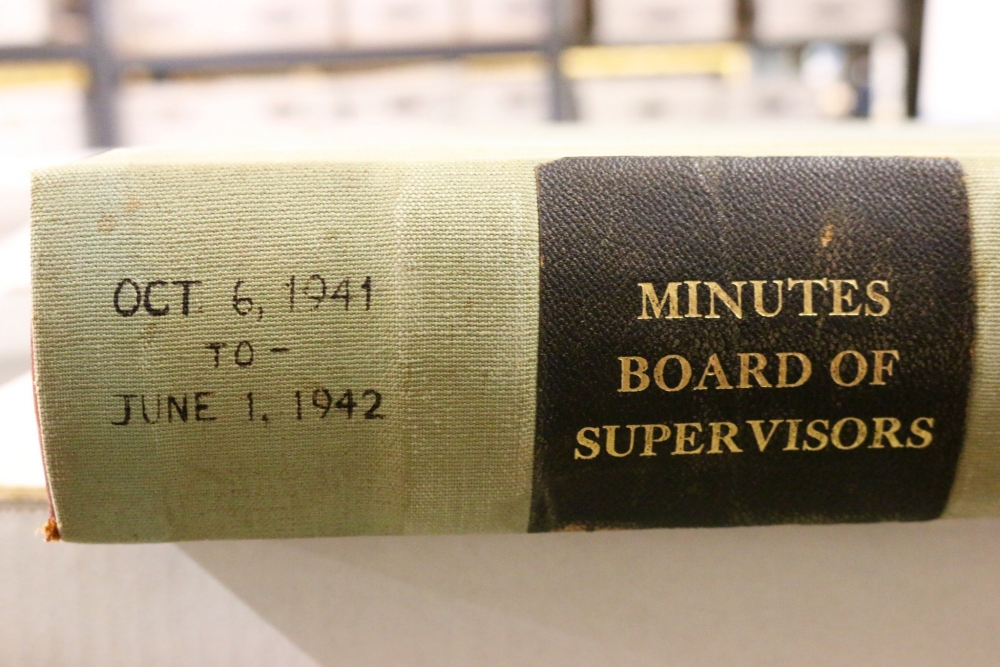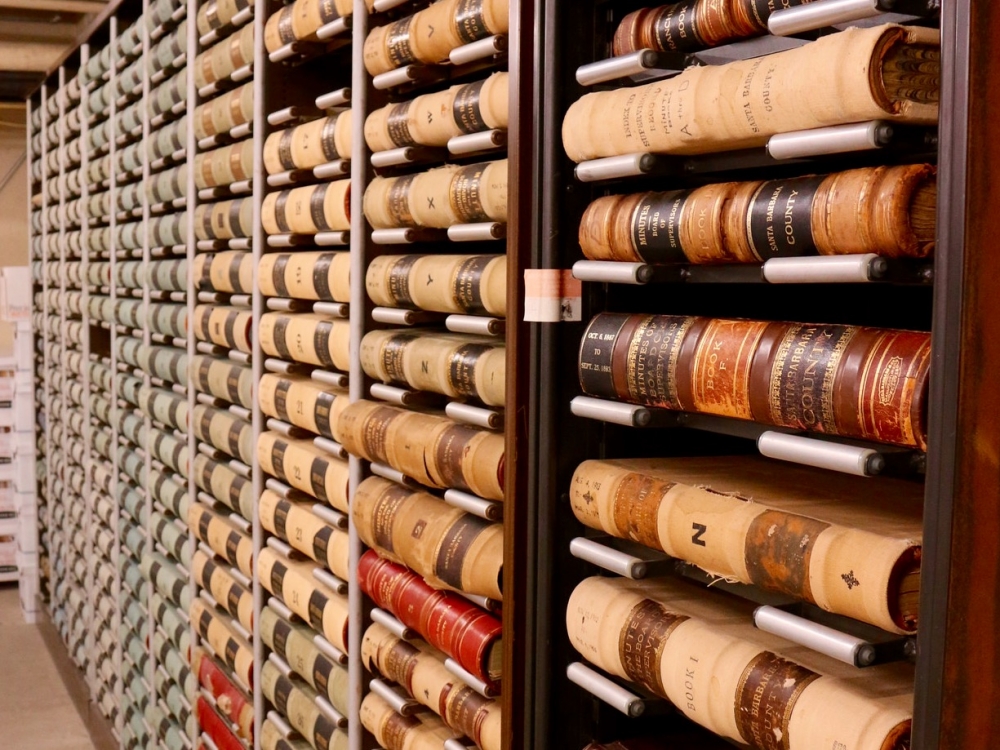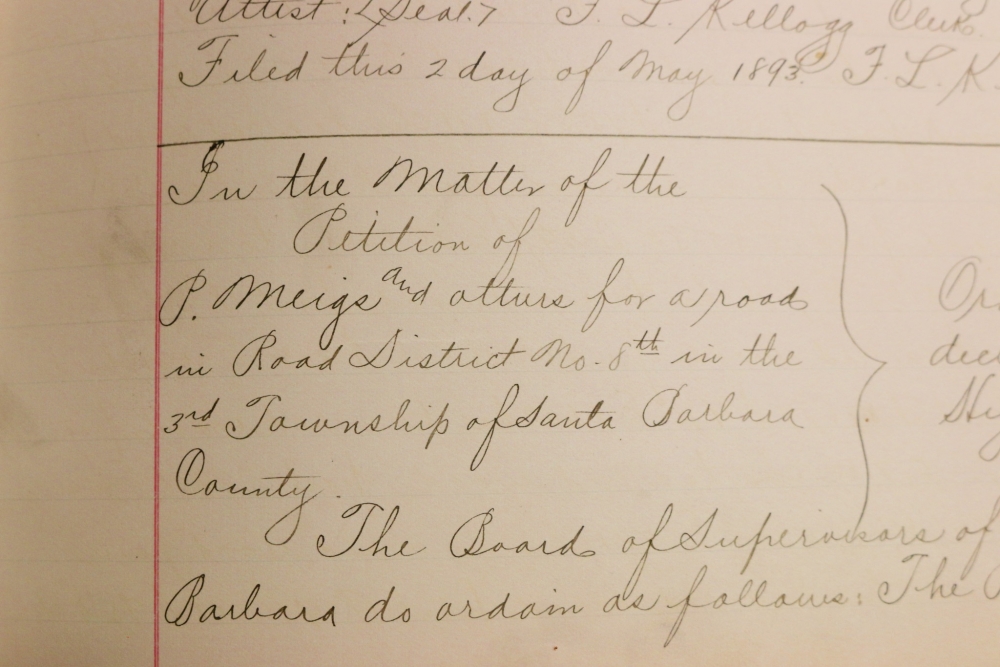Partners in Preservation
In an effort to expand public access to government records, and to preserve an extensive survey of local history, UC Santa Barbara and Santa Barbara County have joined forces to digitize and archive 127 years worth of legislative records.
From construction of the now-iconic county courthouse to the purchase of the beloved County Bowl, the Santa Barbara County Board of Supervisors debated and decided many of the matters that made the seaside city what it is today. Each and every one of their discussions was recorded — first by hand, later by typewriter — and saved in minute books of board meetings from the first recorded day of county history, November 18, 1850, into early April 1977, when archiving moved to microfiche.
A unique partnership between UCSB and the county will soon see those historical volumes — all 215 of them, some 90,000 pages in total — available and searchable both online and in person. Once restored and digitized, the books will be transferred to the campus, where they will reside in UCSB Library’s Special Research Collections.
“This is a great county and UCSB community project that shows all the potential for these kinds of cooperative ventures in terms of preserving history and making it more accessible,” said John Majewski, UCSB’s interim dean of humanities and fine arts and a professor of history. “And it’s using the expertise of the university in ways that allow people to better understand the history of where they live. I think it’s exciting.”
A selection of the books is now available for a first-ever public viewing as part of a new exhibition at the Channing Peake Gallery inside the Santa Barbara County Administration Building, 105 East Anapamu Street, through September 18. An opening reception for that show, ‘For the People, By the People: Government at Work in Santa Barbara,’ will be held July 2, from 5 to 8 p.m.
“It is critically important that we invest in the preservation of these unique and fragile records which document the history of our county from its very beginning,” said Third District County Supervisor Doreen Farr, a collaborator on the effort. “I am hopeful that this exhibition and corresponding restoration project will enable the public to make new discoveries about Santa Barbara County’s rich local history.”
The project was launched more than a year ago by Mike Allen, clerk of the board for the county, when he approached UCSB historians about a potential collaboration. The endeavor has since tapped scholars and students alike, in the departments of history and of art history, Majewski said, for their knowledge about the value of such records and the best way to display them for viewing.
Also actively involved from the beginning, the UCSB Library will house the original bound volumes in a state-of-the-art storage system for special research collections. The books will be available for the public to view when the library’s new building formally opens in 2016.
“It’s a wonderful example of a partnership among public institutions,” University Librarian Denise Stephens said of the project. “The UCSB Library is honored to bring its expertise to a partnership that ensures the persistence of these original documents and their accessibility to taxpayers and researchers in the years to come.”
For UCSB, the archive effort will also be an especially huge boon to research and teaching, according to Majewski, himself a scholar of 19th-century U.S. history with an emphasis on political economy.
“These kinds of sources are gold mines,” he said. “These books lead you to names of movers and shakers at the time, what the political environment was, where the debates were. Looking at them you begin to realize that decisions that were made in 1850, maybe for somewhat random reasons, actually played huge role in future development of the community. For researchers, sources like these are really, really important.
“And it’s going to be great for students,” he continued of the collection that will ultimately reside on campus. “For undergraduates who are learning the ropes of what it means to be a historian, what it means to be a researcher, to have all these volumes and all this information and see how to make use of it and connect it with other sources of evidence is a really exciting opportunity.”
Providing a unique and invaluable window into the past of the Santa Barbara community, the books are the sole record of the county’s legislative history. They offer a wealth of information about the formation and growth of the county, detailing its political climate as well as developments in architecture, education, infrastructure, land use, public health, policies and more.
Recognition of the records’ historical significance, as well as of public interest in the documents and the physical fragility of the aging volumes themselves is what inspired the county to engage UCSB in executing a plan to restore, digitize and archive the books.
The campus is grateful for the opportunity.
“With this kind of historical source I think this partnership is unique, which is what made it so exciting and why we were so eager and enthusiastic to partner with the county,” Majewski said. “The history department benefits, the humanities and fine arts benefit, the library benefits and the county benefits. It just made a lot of sense. We’re delighted that the county reached out because we can show the community this is the value of having a major research university in the area. These types of partnerships are possible and they can really do great things.”






